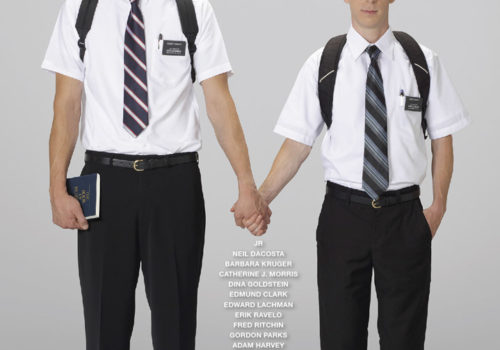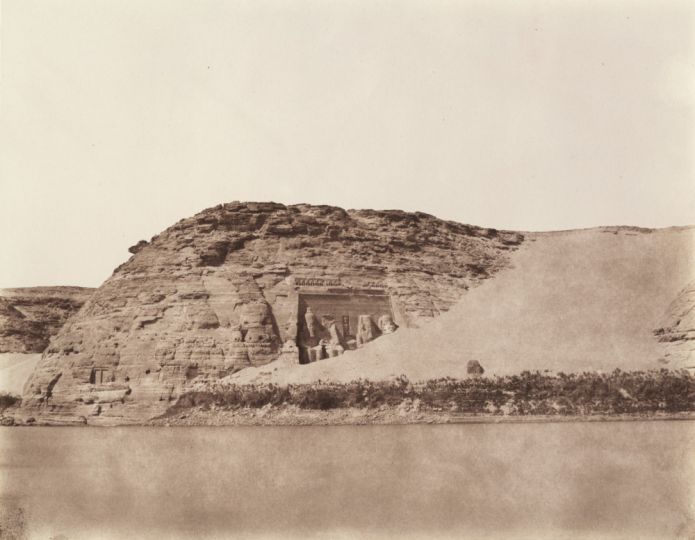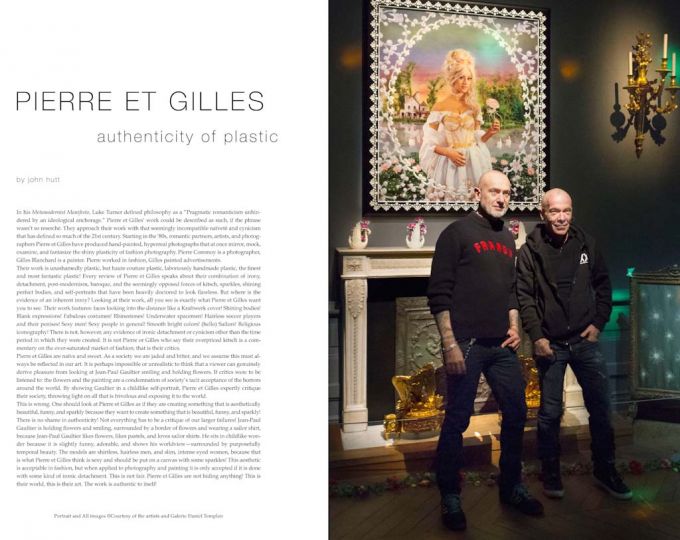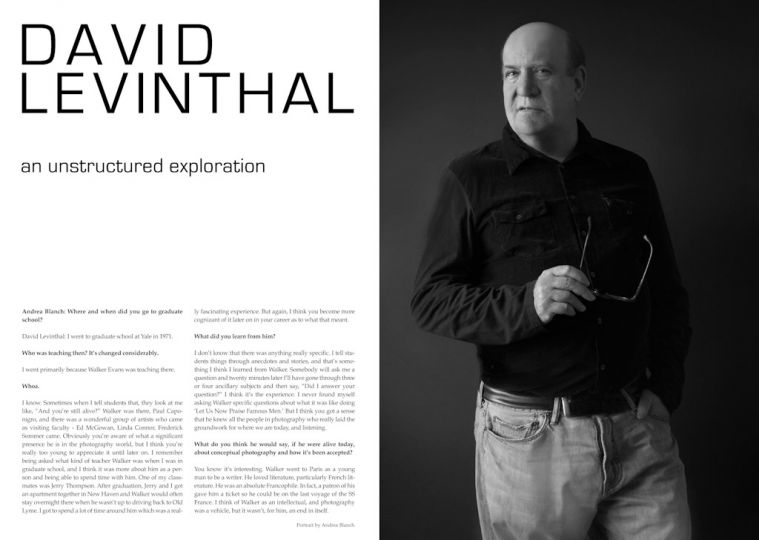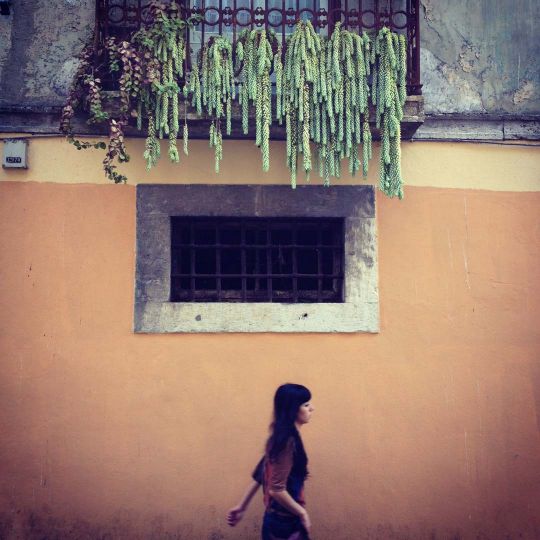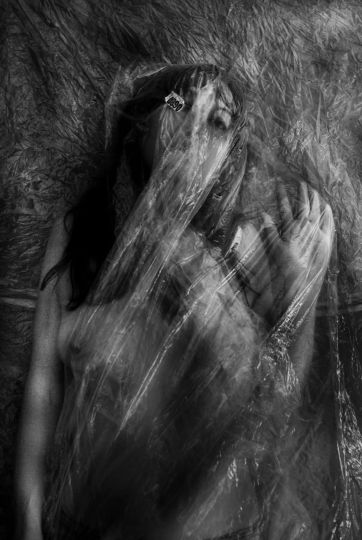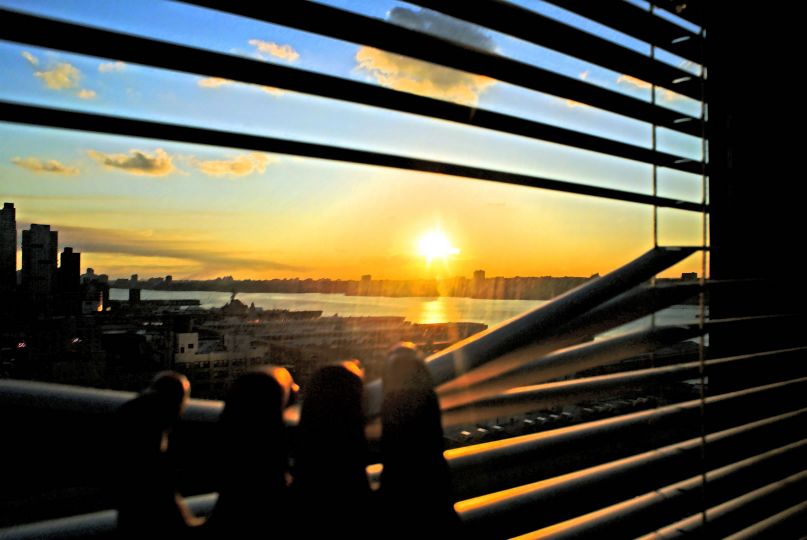Her name is Andrea Blanch. She was one of the great fashion photographers of the 80s and 90s and after teaching at ICP she wanted to give emerging photographers a platform to show their work seeing the difficulty they had beginning their careers. So, in 2011 she created her online magazine Musée*. Her partners Sam Shahid ( Shahid & Company) The President & Creative Director and Matt Kraus, Art Director join her with the 6th issue. Musée is one of the most interesting website (that offers print on demand) in the United States. Every 2 weeks, we will present one of their chronicles.
To start, here is the interview with Neil Dacosta (published in Musée Controversy No 12).
Andrea Blanch: Are you a Mormon?
Neil DaCosta: No. Sara and I are married and we’ve both lived in Salt Lake City. We have a lot of friends who are Mormon, who aren’t Mormon, and who were Mormon but aren’t Mormon now. We were around the LDS church a lot, just from being in Salt Lake.
AB: Tell me a bit about your background and how you got into photography.
ND: I did most of my growing up across the river in New Jersey, and got a camera when I was in high school and then learned that you can make that into a career. I went to college in upstate New York, at Rochester Institute of Technology. There I decided that I didn’t want to go on the path of moving to to New York or L.A. or Paris to become a famous photographer, so I got into snowboard photography which I did for a handful of years. Once I felt like I was done with that aspect of photography, I wanted to move into more of a commercial aspect. I ended up in Portland, Oregon shooting advertising, lifestyle, and product photography but also doing projects like this to keep it fun for me. This project was done in Portland. We’d always wanted to do a project about Mormons, Sara and I. [To Sara] You want to give your background?
Sara Phillips: I snowboarded, so that’s how I met Neil. We were doing that together for a number of years. Then I went to an experimental advertising school in Portland. That was the impetus for wanting to do more projects.
ND: That brings us to the first project we worked on as a team, “Astronaut Suicides.” She had access to an astronaut suit for a weekend, and it was right when the funding got cut for NASA and the last space shuttle landed. We did a series of this astronaut committing suicide in different ways. That one made its rounds on the Internet. It was pretty popular.
SP: It was the timing. JFK had made such a powerful speech about going to the moon by any means necessary.
A lot of people in that community were losing their jobs. It was interesting to take a black humor approach to it. We thought it would engage people that typically wouldn’t care about that.
ND: It worked out great. Someone who got laid off from NASA after the shuttle landed, emailed thanking us for the project and that his former colleagues really enjoyed it.
ND: After that project, we wanted to work on another.
SP: It was organic. It wasn’t like we plotted it for three years. Things just coincided, with the timing of the
elections and everything. It seemed like a fun thing to do.
AB: How did you come to this idea of putting Mormons missionaries in sexual positions?
ND: It had different meanings for the three of us involved. I thought it was a response to Proposition 8 in California that outlawed same-sex marriage. Prop 8 was, from my understanding, back-ended by the Mormon church who called on their congregation to donate money to it. Even though they’re not allowed to meddle in the government, they blurred the lines there. This was a visual discourse about the separation of church and state. It wasn’t an all out attack on the church, but a rebuttal to the way that they handled things.
SP: If you can laugh or joke about anything, you’re much more open to having a discussion about it. So it was a way to open up a dialogue. The project was based on a quote and there was no skewing it one way or another from our perspective.
ND: The church was in the news because Mitt Romney was running for president. We knew from the Astronaut Suicides that timing was important. That’s when we decided to finally make it happen.
Missionaries go out as a pair usually, so that’s why we had two guys. It’s a time where you’re coming into your sexuality. Young males and females are put together and told to suppress those feelings.
I obviously didn’t go on any missions, but I have friends who have, and they say it’s pretty wild, what’s going on in your brain at that age. Teenagers have a hard enough time figuring things out in that point of their lives.
AB: What debate do you think you started with this series?
ND: I hope it made it easier for people and families to talk about this subject of marriage equality by breaking the ice and giving it some humor. It might not be something they want to talk about unless they saw these photos and said, “Oh, that’s pretty funny.” Hopefully they go into a bigger discussion about it instead of keeping those ideas to themselves because they don’t know how to bring it up or approach it.
AB: Why did you decide to keep the models clothed?
SP: It was never meant to be offensive. It was meant to be humorous. Showing them in any state of undress would have charged it sexually and been offensive. There was a comedy in how pristine they looked. You wonder more what they’re thinking about. It was more interesting to depict these sexual positions with someone that kind of looks disengaged, rather than making it overtly sexual.
AB: What was the process of preparing for the shoot like?
ND: Shelby was really involved in that. He was in the church, and his brother went on a mission. He had all the technicalities of how the suit should fit what they should look like. I was almost thinking of doing it in an actual bedroom scene, but Sara being the art director suggested that we do it on the grey. It makes it sterile and makes you concentrate on the idea of it and not what’s going on in the actual photo.
AB: The series became a viral hit after it was posted on Reddit. Were you surprised by the popularity of
the project?
SP: It got exposure on different media sites, but Reddit caused it to shut down the server. We had to reupload the server speed at 4 a.m. Some people wrote some great reviews about it, and from there it got big. It was done organically rather than us sending it to other people. Anytime there’s that much debate and people have organically shared it in that way, it feels successful.
AB: What has the reception to this project been like? Have you received a lot of backlash?
ND: There was some hate mail that threatened our lives, but most of it was positive. What I took away from it was that younger people in the church don’t have the same views as the old, indoctrinated views of the church. Their views are changing with society’s views. Their church is even starting to catch up with that. Not as fast as it should, but they are recounting some parts of it. They’ve had to do it before with other things, like allowing black people into the church
AB: Were you anticipating any backlash?
ND: Yeah. It’s a touchy subject. Like I said, we didn’t want to just go out and attack someone’s belief system and their religion because that’s easy to do. It’s not the way that I want to live my life. Even with putting this out the way that we did, I figured people would take it as an attack and some did.
SP: We tried to reply to everybody except for a couple where there was obviously no point in replying, but it was just nice to be able to communicate with people who thought it was funny.
AB: No emails from the head of the Church?
ND: That was a concern to us, because who knows what goes on in those upper levels of the Church that people like us don’t know about. I definitely saw some heads from the Church of Latter Day Saints headquarters coming to the site and thought, “Oh boy. Is this going to turn into something bigger?” It hasn’t happened yet, knock on wood. I think it would happen to the Book of Mormon show people before it would happen to us.
SP: I think that the Church would realize it was a respectful way to do it. There was an effort to make it tasteful rather than just be offensive.
AB: To be clear, you did this project because this whole question just got under your skin, so to speak,
and you wanted to talk about it?
SP: We all have slightly different perspectives. For me, it was a time when there was an election, and a candidate who was part of this religion wasn’t answering questions about the issue, even with a lot of people asking a lot of questions about it.
AB: From your knowledge of the Mormon church or religion, why do you think he didn’t answer questions about it?
ND: I personally believe that the Church and Romney made a conscious decision to separate themselves because they know how they look in the eyes of non-church members.
SP: He said that he very specifically didn’t want his religion to be part of the conversation, which seemed strange. You can’t shut that off when you’re running for an office as big as that, especially when you as a candidate aren’t able to separate a political decision that you make from your religion. At that point there was no separation. That, to me, was fascinating.
AB: Personally, how would you feel about having a Mormon as a President?
ND: I don’t want to go too much into my religious beliefs. I think that politics are ridiculous to begin with, let alone adding the religious aspect to it.
SP: We want someone that’s open. If somebody has beliefs that are that strong, I would want them to be open about it and know that they would be able to govern without that being a factor. I appreciate that they have strong beliefs but in a position of power, they should be able to separate that.
ND: Which I don’t think would have happened if Romney won.
AB: For me, it’s cultish. I met a young woman who was in a cult until she was about 18 or 19. It took her that long to escape.
ND: That’s what’s so sad about it. They really don’t have the choice. And when they do have the choice to leave, or if they get out without having the choice to leave, there are still residing issues because of how much control there was at one point in their lives.
AB: How do people receive them when they leave?
ND: Families that stay in churches don’t appreciate when their family members leave, but the church does try to get them back. Like Shelby, every once in awhile, they try to find him and send him a letter, like, “We forgive you. Come back.” I think his grandparents were never that excited that he left the church and his parents don’t really follow along with the church’s beliefs anymore.
AB: Would you say that this is the most personal or controversial work you’ve done to date?
ND: I believe so strongly in the equality issue that I almost feel like Astronaut Suicides was more controversial.
We probably got more emails on that, like, “This is completely insensitive. How dare you do this?
I just lost a child to this.” I’ve lost friends to suicide through various ways and it sucks. But when it comes down to it, I guess it is their choice. It’s not something that I’m going to repress and not talk about because it does happen. I don’t believe as strongly about that as I do about the equality issue.
AB: What’s next for you?
ND: Now that we’ve had an astronaut killing himself and two mormon guys boning in their clothes, it’s going to be tough to top. We’re trying to figure it out.
SP: The thing is, neither project has come from us sitting around saying, “We need to do a project. Let’s come up with something.” They’ve just come from issues that are around. You start talking about it and it bubbles up from there.
AB: Has this been monetized, are you going to do a book or anything?
ND: No, but my feeling is I don’t want to make money off of it. That wasn’t the intent in the first place.
Maybe we could make it into something and donate the money towards one of the advocacy groups.
SP: It would be cool to see them big, because right now the only format you can see them is online. Being able to produce something tactile is always super fun.
ND: It’s just doing it properly, now that this thing has had such a life
*Musée Magazine is a digital, not-for-profit, contemporary photography publication under the tutelage of founder and Editor in Chief, Andrea Blanch. Blanch began her photographic career under the mentorship of Richard Avedon. Her work has been featured in such publications as French, English, & Italian Vogue, Elle, and Rolling Stone, etc. Musée’s mission is to provide a venue for emerging photographers, as well as a resource for the photographic community. We are a themed publication that provides in-depth interviews with leading photographers and art world insiders, spotlighting certain artists and trends. In the spring of 2016, Musée Magazine published its 14th issue.

